In the realm of heavy-duty transportation, the reliability and efficiency of trailer braking systems are paramount. At CarMax Trailer, we specialize in manufacturing semi-trailers equipped with state-of-the-art air brake systems. This guide delves deep into the mechanics of trailer air brakes, elucidating their functionality, components, and maintenance essentials to ensure optimal performance and safety on the road.
Introduction to Trailer Air Brakes
Trailer air brakes are a critical safety feature in semi-trailers, designed to provide effective stopping power for large loads. Unlike hydraulic brakes used in passenger vehicles, air brakes utilize compressed air to activate the braking mechanism, offering superior control and reliability, especially under heavy load conditions.
Why Choose Air Brakes for Trailers?
- Efficiency: Air brakes provide consistent and powerful braking force, essential for managing the mass of heavy trailers.
- Safety: Enhanced stopping capabilities reduce the risk of accidents, particularly in adverse weather conditions.
- Durability: Air brake systems are built to withstand the rigors of long-haul transportation, ensuring longevity and minimal maintenance.

Core Components of Trailer Air Brake Systems
Understanding the functionality of trailer air brakes begins with familiarizing oneself with their key components. Each element plays a pivotal role in the overall performance and reliability of the braking system.
1. Brake Chambers
Brake chambers are the heart of the air brake system. They convert the compressed air into mechanical force to actuate the brakes.
- Types:
- Double-acting Chambers: Provide force in both braking and release phases, ensuring quicker response times.
- Single-acting Chambers: Only operate during braking, relying on springs for the release function.
2. Slack Adjusters
Slack adjusters bridge the gap between the brake chamber and the brake linkage, ensuring that the brakes engage appropriately.
- Function: They translate the linear motion from the brake chamber into rotational motion to apply the brake shoes against the drums.
- Self-Adjusting Mechanism: Automatically compensates for brake shoe wear, maintaining consistent brake performance.

3. Brake Shoes and Drums
The interaction between brake shoes and drums creates the friction necessary to slow down or stop the trailer.
- Brake Shoes: Curved components that press against the inner surface of the drum to create friction.
- Brake Drums: Rotating cylindrical components attached to the wheels, designed to be engaged by the brake shoes.
4. Air Lines and Valves
A network of air lines and valves orchestrates the distribution of compressed air throughout the braking system.
- Air Lines: Transport compressed air from the tractor to the trailer, ensuring all brakes receive sufficient pressure.
- Valves: Control the flow and direction of air, including relay valves, quick-release valves, and emergency shut-off valves.
5. Compartments and Reservoirs
Air compartments and reservoirs store compressed air, maintaining the pressure necessary for effective braking.
- Air Tanks: Store a reserve of compressed air to ensure consistent brake performance, even during prolonged use.
- Reservoirs: Act as buffers, stabilizing air pressure fluctuations and preventing brake fade.

The Operational Mechanics of Trailer Air Brakes
The functionality of trailer air brakes can be dissected into a series of coordinated steps, each essential for the system’s overall effectiveness.
Step 1: Air Compression and Storage
Air is compressed by the tractor’s compressor and stored in the air tanks. This compressed air serves as the energy source for the braking system.
Step 2: Activation of the Braking System
When the driver applies the brake pedal, it triggers the master brake valve, releasing compressed air into the brake lines leading to the trailer.

Step 3: Activation of Brake Chambers
The pressurized air enters the brake chambers, causing the diaphragms within to expand. This expansion moves the piston, which in turn actuates the slack adjusters.
Step 4: Engagement of Brake Shoes
The movement of the slack adjusters causes the brake shoes to press firmly against the brake drums, creating the necessary friction to slow or stop the trailer.
Step 5: Release of the Brakes
Upon releasing the brake pedal, the master brake valve allows air to escape from the brake lines, and springs within the brake chambers retract the brake shoes away from the drums, terminating the braking action.
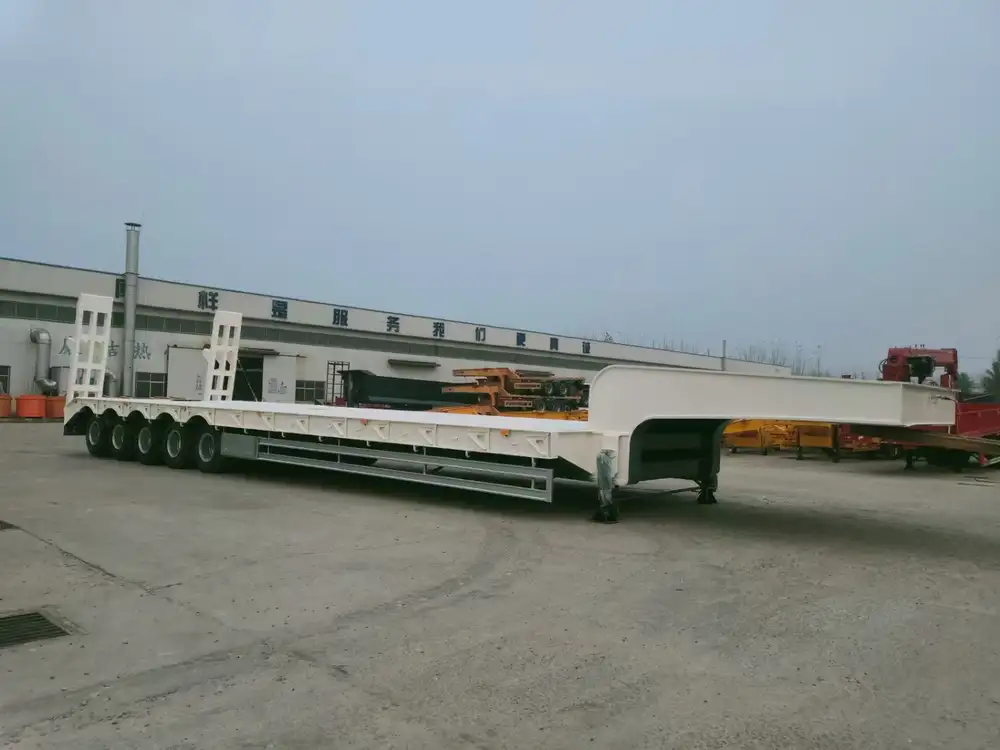
Advantages of CarMax Trailer’s Air Brake Systems
At CarMax Trailer, we integrate advanced engineering principles to enhance the performance and reliability of our air brake systems. Here’s what sets our systems apart:
Enhanced Safety Features
- Dual Air Lines: Redundant air lines ensure brake functionality even if one line fails, providing an additional layer of safety.
- Anti-lock Braking System (ABS) Compatibility: Our air brake systems are designed to integrate seamlessly with ABS technology, preventing wheel lock-up and enhancing control during sudden stops.
Superior Durability and Maintenance
- High-Quality Materials: We utilize premium-grade components that resist wear and corrosion, extending the lifespan of the braking system.
- Easy Maintenance Design: Our brake systems are engineered for straightforward inspection and maintenance, minimizing downtime and ensuring consistent performance.

Optimal Performance
- Quick Response Time: The efficient design of our brake chambers and valves ensures swift brake activation, crucial for large trailers.
- Consistent Brake Force: CarMax Trailer’s air brake systems deliver uniform braking force across all wheels, maintaining trailer stability during braking.
Maintaining Your Trailer Air Brake System
Proper maintenance is vital to ensure the longevity and reliability of your trailer’s air brake system. Regular inspections and timely interventions can prevent potential failures and enhance braking performance.
Routine Inspection Checklist
| Component | Inspection Frequency | Key Aspects to Check |
|---|---|---|
| Air Tanks | Weekly | Check for moisture accumulation, inspect for corrosion, ensure air levels are adequate. |
| Brake Chambers | Monthly | Inspect diaphragms and pistons for wear or damage, ensure no air leaks. |
| Slack Adjusters | Every 6 Months | Verify proper adjustment, check for loose or worn components. |
| Brake Shoes and Drums | Quarterly | Examine for wear, ensure even contact, check for overheating. |
| Air Lines and Valves | Monthly | Inspect for leaks, secure connections, and proper valve operation. |
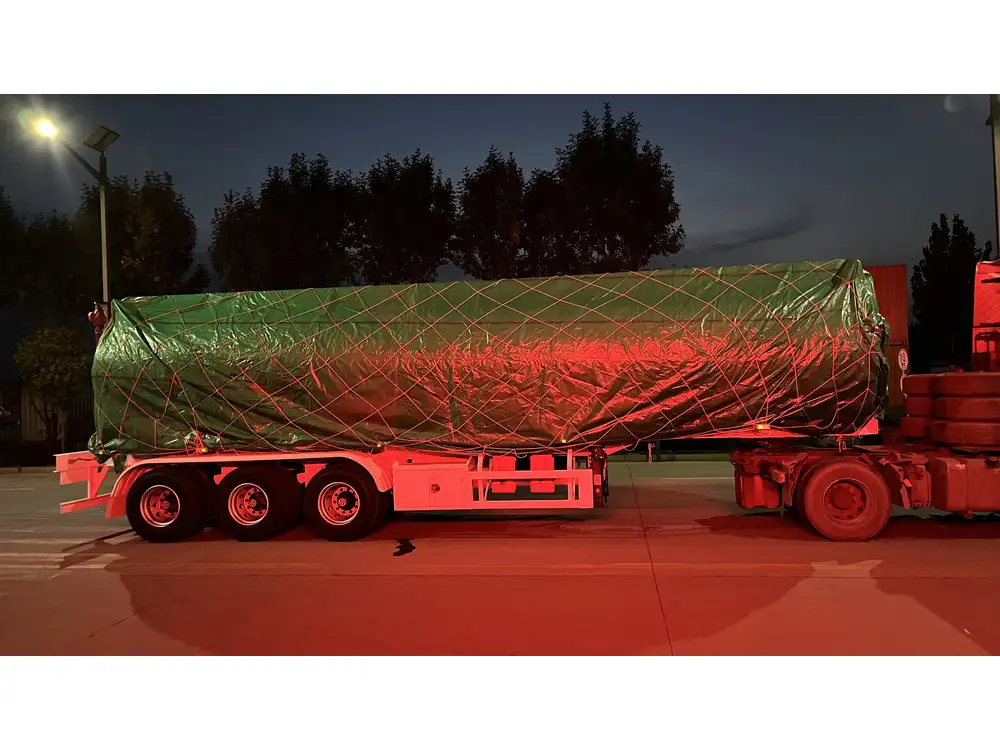
Preventive Maintenance Tips
- Regular Bleeding: Remove moisture and contaminants from the air lines to prevent brake fade and corrosion.
- Lubrication: Keep moving parts well-lubricated to reduce friction and wear.
- Component Replacement: Replace worn or damaged parts promptly to maintain optimal brake performance.
- System Testing: Conduct comprehensive brake tests to ensure all components are functioning correctly and efficiently.
Troubleshooting Common Air Brake Issues
Even with robust engineering, air brake systems may encounter issues. Understanding common problems and their solutions can maintain system integrity and safety.
1. Air Leakages
Symptoms:
- Decreased brake performance
- Audible hissing sounds from the air lines
- Dropping air pressure in the tanks
Solutions:
- Inspect all air lines and connections for visible damage or disconnections.
- Replace faulty hoses or fittings immediately.
- Use soapy water to identify leaks by observing bubbles at leak points.
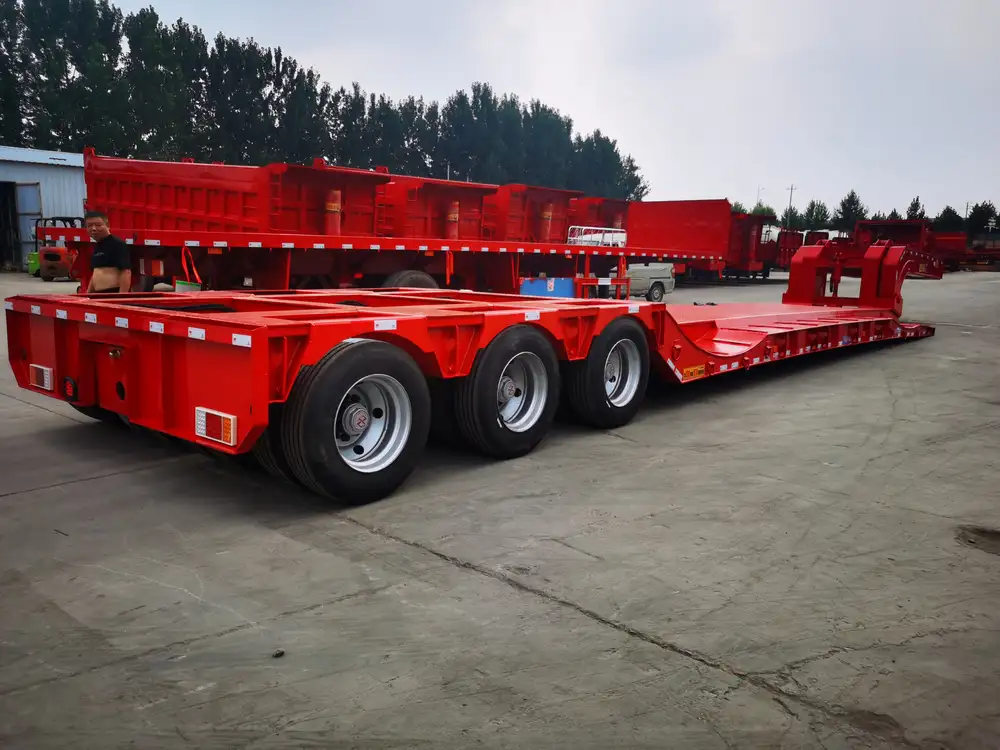
2. Brake Fade
Symptoms:
- Reduced braking efficiency during prolonged use
- Persistent squealing or grinding noises
Solutions:
- Ensure adequate airflow and pressure within the system.
- Inspect and replace worn brake shoes or drums.
- Check for overheating signs and allow sufficient cooling periods during heavy braking.
3. Inconsistent Brake Application
Symptoms:
- Uneven braking force across different wheels
- Trailer pulling to one side during braking
Solutions:
- Verify the adjustment of slack adjusters on all wheels.
- Inspect brake chambers for uniform air pressure distribution.
- Balance air pressure across all brake lines to ensure synchronized braking.
Innovations in Air Brake Technology by CarMax Trailer
Staying at the forefront of braking technology is essential for CarMax Trailer to provide our customers with superior traction and safety. Here are some of the cutting-edge innovations integrated into our air brake systems:
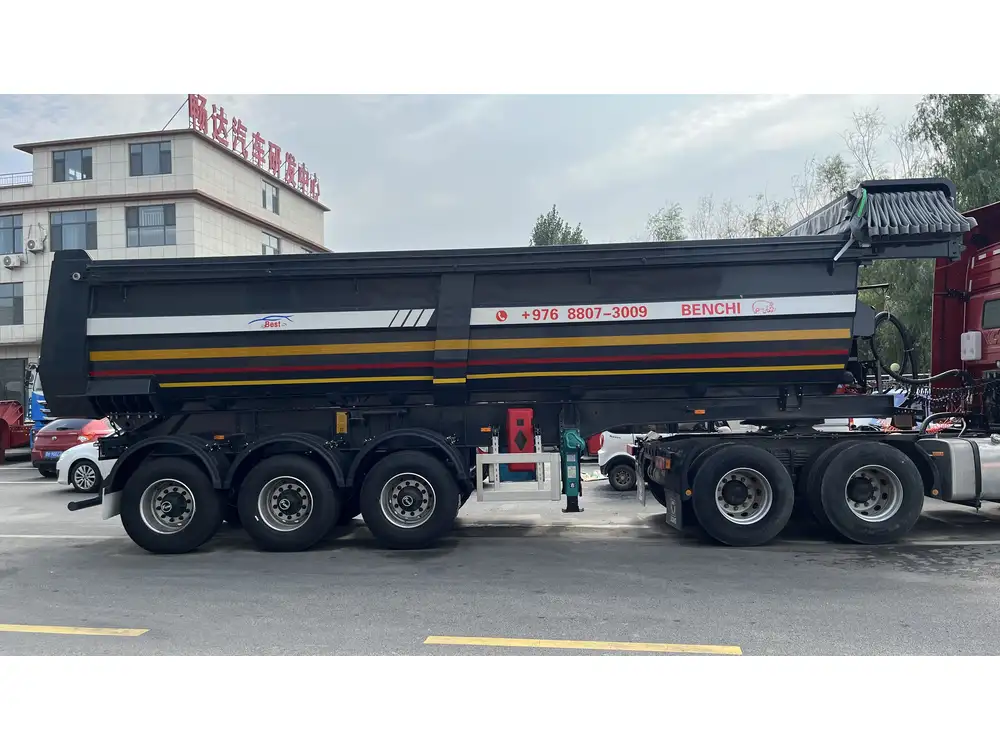
Electronic Brake Controllers
Incorporating electronic brake controllers enhances the precision and responsiveness of braking systems. These controllers manage brake force distribution digitally, allowing for adaptive braking based on load conditions and driving patterns.
Predictive Maintenance Software
Our air brake systems are equipped with sensors that monitor component health in real-time. Predictive maintenance software analyzes this data to forecast potential failures, enabling proactive maintenance and minimizing unexpected downtimes.
Energy Regeneration Brakes
CarMax Trailer is pioneering the use of regenerative braking systems in air brakes, capturing kinetic energy during braking and converting it into usable electrical power. This innovation not only enhances braking efficiency but also contributes to overall energy conservation.

Selecting the Right Air Brake System for Your Trailer
Choosing the appropriate air brake system is crucial for the performance and safety of your trailer. CarMax Trailer offers a range of air brake solutions tailored to diverse transportation needs.
Factors to Consider
Trailer Size and Weight
- Ensure the brake system can handle the maximum load capacity of your trailer.
Operational Environment
- Consider environmental factors such as climate, terrain, and usage frequency which may impact brake performance.
Compliance with Regulations
- Select systems that meet regional and international safety standards and regulations.
Maintenance Capabilities
- Choose systems that align with your maintenance capabilities and resources.
CarMax Trailer’s Air Brake Solutions
| Brake System | Features | Ideal For |
|---|---|---|
| Standard Air Brakes | Reliable performance, easy maintenance | General freight trailers |
| ABS-Compatible Brakes | Enhanced safety with anti-lock functionality | High-speed and long-haul operations |
| Electronic Brake Controllers | Digital precision, adaptive braking | Advanced fleet operations |
| Regenerative Brakes | Energy-efficient, reduced wear and tear | Environmentally conscious fleets |
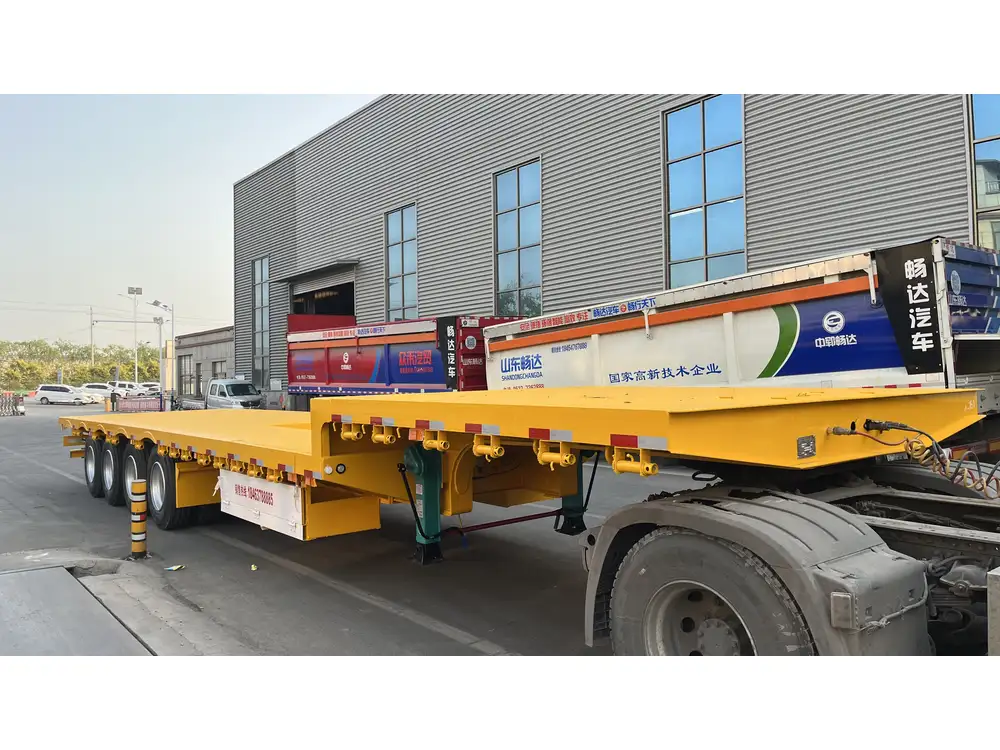
The Future of Air Brakes in Trailer Technology
As the transportation industry evolves, so does the technology behind trailer air brakes. CarMax Trailer is committed to pioneering advancements that enhance safety, efficiency, and sustainability.
Integration with Autonomous Vehicles
Future air brake systems will seamlessly integrate with autonomous driving technologies, enabling precise and automated braking responses that enhance safety and reduce human error.
Enhanced Connectivity and IoT Integration
By leveraging the Internet of Things (IoT), air brake systems will offer real-time data analytics, enabling continuous monitoring and optimization of braking performance.
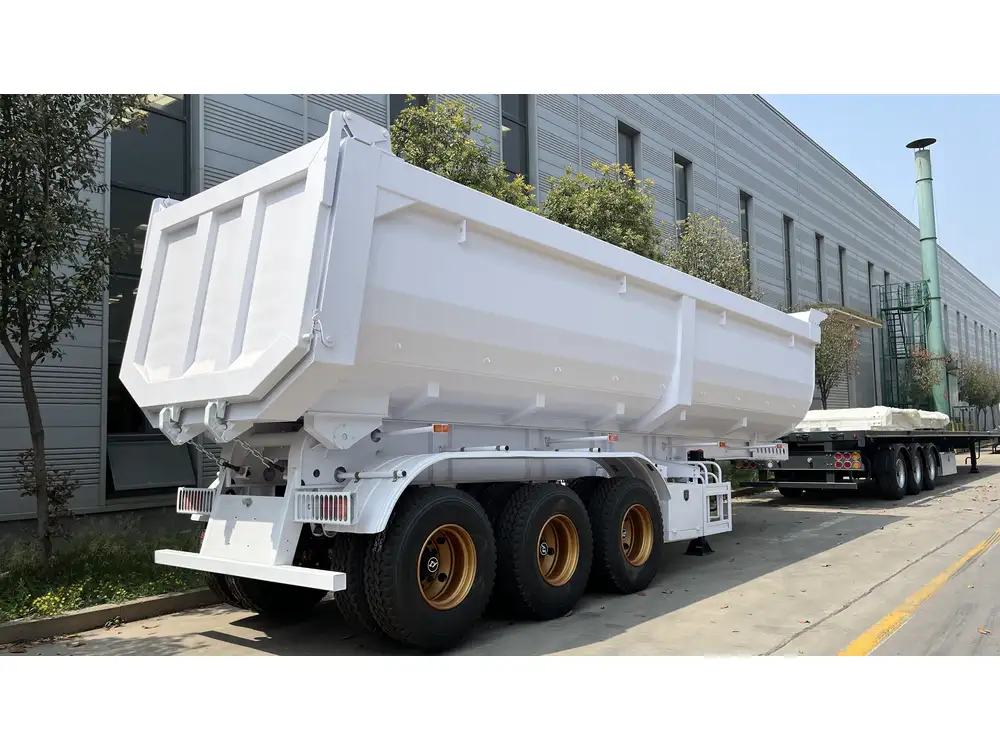
Sustainable Materials and Processes
Advancements in materials science will lead to the development of more sustainable and lightweight brake components, reducing overall trailer weight and improving fuel efficiency.
Conclusion
At CarMax Trailer, our commitment to engineering excellence ensures that our trailer air brake systems deliver unparalleled performance, safety, and reliability. Understanding how trailer air brakes work is essential for maximizing their benefits and maintaining optimal functionality. Through meticulous design, innovative technology, and comprehensive maintenance practices, we empower our customers to achieve safe and efficient transportation operations.
Frequently Asked Questions (FAQs)

1. How often should I inspect my trailer air brake system?
Regular inspections are crucial for safety and performance. We recommend a weekly visual check of the air tanks and lines, monthly inspections of brake chambers and valves, and quarterly examinations of brake shoes and drums. Additionally, comprehensive system testing should be conducted periodically to ensure all components function correctly.
2. What are the signs of worn brake shoes in an air brake system?
Worn brake shoes can lead to decreased braking efficiency, uneven braking, and grinding or squealing noises. Visible wear indicators on the brake shoes can also signal the need for replacement. If you experience reduced braking performance or unusual noises, it’s essential to inspect and replace worn components promptly.
3. Can I upgrade my existing trailer with CarMax Trailer’s advanced air brake systems?
Yes, CarMax Trailer offers a range of upgrade options designed to enhance the performance and safety of existing trailers. Our team can assess your current setup and recommend suitable upgrades, such as ABS compatibility or electronic brake controllers, to meet your specific needs.

4. What maintenance practices can extend the lifespan of my trailer air brakes?
Regularly bleeding the air lines to remove moisture, lubricating moving parts, promptly replacing worn components, and conducting routine inspections are essential maintenance practices. Implementing a preventive maintenance schedule can significantly extend the lifespan of your air brake system and ensure consistent performance.
5. Are CarMax Trailer’s air brakes compliant with international safety standards?
Yes, our air brake systems are engineered to meet and exceed international safety standards and regulations. We ensure that all components and designs adhere to the latest industry guidelines, providing our customers with reliable and compliant braking solutions.



